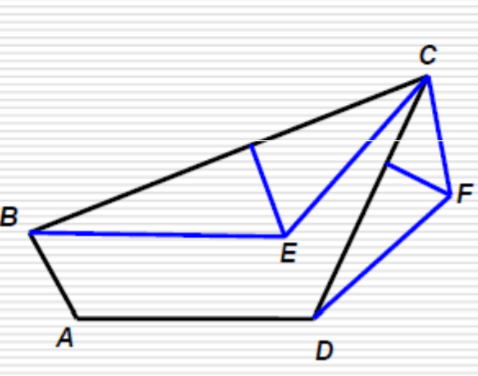This set of Machine Kinematics Multiple Choice Questions & Answers (MCQs) focuses on “Motion of a Link”.
1. What is the direction of velocity of a point in a link relative to another point on the same link rotating in a specific direction.
a) Perpendicular to line joining both the links
b) Parallel to line joining both the links
c) Perpendicular to the surface of the link
d) Parallel to the surface of the link
View Answer
Explanation: Velocity of any point on a link with respect to another point on the same link is always in the direction perpendicular to the line joining these points on the space diagram.
2. The direction of velocity is parallel if the rotation is anticlockwise and perpendicular to the line joining links if the rotation is clockwise.
a) True
b) False
View Answer
Explanation: Velocity of any point on a link with respect to another point on the same link is always in the direction perpendicular to the line joining these points on the space diagram both during anticlockwise and clockwise rotations.
3. What is the correct representation of velocity of point A with respect to B in a link?
a) Vab
b) Vba
c) Va-b
d) Vb-a
View Answer
Explanation: When there are two points on a link, the velocity of a point A wrt to other point on the same link is represented by Vab.
4. What is the velocity of point C with respect to A in the given figure?

a) Perpendicular to line joining BC
b) Perpendicular to line joining AC
c) Parallel to line joining BC
d) Parallel to line joining AC
View Answer
Explanation: In the above figure we can assume an imaginary link between A and C, as per the rule, the velocity of a point with respect to any other point on the same link is perpendicular to the line joining the links.
5. Which type of pair formed by two elements which are so connected that one is constrained to turn or revolve about a fixed axis of another element?
a) Turning pair
b) Rolling pair
c) Sliding pair
d) Higher pair
View Answer
Explanation: The type of pair formed by two elements which are so connected that one is constrained to turn or revolve about a fixed axis of another element is known as turning pair.
6. Which of the following is a lower pair?
a) Pulleys in belt drive
b) Cam and follower
c) Belt drive
d) Ball and socket joint
View Answer
Explanation: If two moving elements do not have surface contact in motion, then the pair is known as lower pair, in the given question ball and socket joint is a lower pair.
7. In a lifting machine, the effort required to lift loads of 200N and 300N were 50N and 60N respectively. If the velocity ratio of the machine is 20 determine effort loss in friction at 200 N.
a) 30 N
b) 35 N
c) 40 N
d) 45 N
View Answer
Explanation: When W = 300 N, P = 60 N
Effort lost in friction, FP = P – W/V.R. = 60 – 300/20 = 45 N.
8. In a lifting machine, the effort required to lift loads of 200N and 300N were 50N and 60N respectively. If the velocity ratio of the machine is 20 determine maximum efficiency which can be expected from this machine.
a) 30 %
b) 40 %
c) 50 %
d) 60 %
View Answer
Explanation: Maximum possible efficiency of any machine = 1/m x V.R. = 1/1/10 x 20 = 0.5 = 50 %.
Sanfoundry Global Education & Learning Series – Machine Kinematics.
To practice all areas of Machine Kinematics, here is complete set of 1000+ Multiple Choice Questions and Answers.
If you find a mistake in question / option / answer, kindly take a screenshot and email to [email protected]
- Practice Mechanical Engineering MCQs
- Practice Aeronautical Engineering MCQs
- Check Aeronautical Engineering Books
- Apply for Mechanical Engineering Internship
- Check Mechanical Engineering Books
